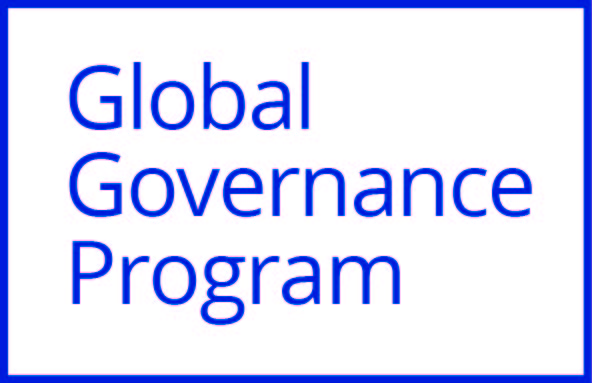
Global Governance Program
Including the G7 Research Group, G20 Research Group,
BRICS Research Group and the Global Health Diplomacy Program

 |
Global Governance Program |
 |
G7 Leaders Need to Talk
Matthew P. Goodman, senior adviser for Asian Economics,
William E. Simon Chair in Political Economy, Center for Strategic and International Studies
May 16, 2016
Originally published in Global Economics Monthly, Volume V, Issue 5, May 2016
President Obama's visit to Hiroshima at the end of this month will be a powerful reminder of how far U.S.-Japan relations have come over the past 70 years. It will likely overshadow the original, more prosaic purpose of the president's trip: to meet his counterparts from Japan, Germany, the United Kingdom, France, Italy, and Canada for the annual G7 summit. But at a turbulent time, there is real value in leaders of the world's largest advanced democracies getting together to discuss shared concerns. The Japanese hosts should allow plenty of time for leaders to talk about the two core themes that brought the group together four decades ago: a troubled global economy, and challenges to a global order of which these seven countries have long been the principal champions.
In his G7 welcoming remarks, Prime Minister Shinzo Abe of Japan nicely captures the daunting agenda facing the seven leaders when they meet at the seaside resort of Ise-Shima: "Today, the international community faces numerous challenges. A slowdown in the growth of the global economy, terrorism threatening people's lives, a surge of refugees, and unilateral changes to the status quo through the use of coercion are all among the challenges affecting the peace and prosperity we enjoy in our daily lives." Abe then issues a call to action: "The G7 members, which share fundamental values such as freedom, democracy, the rule of law, and human rights, must take a global perspective to provide the most appropriate roadmap for solving these challenges with a clear vision."
Much of the discussion at Ise-Shima will revolve around pressing transnational threats such as terrorism, nuclear proliferation, and pandemic disease. This is the first G7 summit since the Paris and Brussels attacks, which showed the metastasizing threat of the Islamic State even as it has lost ground in Syria and Iraq. Recent nuclear and missile tests by North Korea are causing real alarm in Tokyo and Washington. Strong statements of concern about these threats and perhaps even some new joint action — for example, to strengthen health systems to better prepare for pandemics like Ebola and Zika — can be expected.
As it has for many years, development will also feature prominently on the G7 agenda. This will be the first chance for leaders to discuss concrete ways to take forward the Sustainable Development Goals since their adoption at the UN General Assembly last fall. Japan has also emphasized quality infrastructure, women's empowerment, and implementation of last year's climate change agreement in Paris as priorities for the upcoming summit.
But Tokyo would be remiss if it did not leave plenty of time on the Ise-Shima agenda for discussion of two issues that, while changing in their specifics, have been organizing principles of the G7 since the group first met in 1975. This is especially so because, as noted here a year ago, fault lines have appeared in the G7 in both of these areas.
The first is strengthening the world economy. All G7 leaders will agree that global growth is currently far from their often-stated goal of "strong, sustainable, and balanced"; a more accurate description of conditions today would be weak, uncertain, and unbalanced. But there remains a deep divide between those in the group who argue that the main problem is supply-side impediments (notably Germany) and those who think it is lack of demand (essentially everyone else). While Japan and the United States are likely to call for new stimulus — including greater spending on infrastructure improvement, something needed in all G7 countries — consensus is unlikely.
Even where they can agree, for example on the need for structural reform in individual G7 economies, the best that can be expected is hortatory language in the final communiqué. Follow-through will depend on fickle domestic politics in each country. As argued here before, it would be more productive for G7 leaders to lay down some limited but tangible "bricks in the road" toward stronger global growth. One helpful thing they could do in this regard is to give a strong political push to part of the multilateral trade agenda — instructing their ministers to complete negotiations on environmental goods, for example. It would also be helpful for them to strongly reaffirm their determination to wrap up the two megaregional trade agreements that G7 members are involved in, the Trans-Pacific Partnership (TPP) and Transatlantic Trade and Investment Partnership (TTIP).
The second organizing principle of the G7 since its founding has been bolstering the global order at times of stress. The first summit in Rambouillet followed the breakdown of the Bretton Woods currency system and the Arab oil embargo in the early 1970s. Today's threats are no less challenging: Russia's aggression in Ukraine, China's assertiveness in the South China Sea, cyber attacks, and — of particular interest here — challenges to established institutions and rules of the global economic order. G7 governments agree on much of this and have taken joint action in response to these challenges, notably on Ukraine. But cracks in group unity are also apparent. One example, discussed here last year, was the open rift between the United States and Japan on one side, and the European members of the G7 on the other, in their response to China's establishment of the Asian Infrastructure Investment Bank (AIIB). There is also growing concern in Tokyo and Washington that European countries' eagerness for better commercial ties with China is blinding them to the risk of sensitive technology getting into the wrong hands, whether through leaky export-control and foreign-investment-review processes, cyber theft, or transfers to "students" resident in G7 countries.
Shared concerns about Chinese offloading of excess manufacturing capacity, notably in steel, have brought G7 countries into closer alignment over the past year on some of these concerns. But the Japanese hosts should carve out sufficient time during the private sessions at Ise-Shima for leaders to have a full and frank discussion of the challenges that China presents to the existing order, spanning both security and economic issues.
It is easy to be cynical about the value of high-level international meetings, which typically produce more words than action. Measured by the visible results it is likely to generate, the G7 Ise-Shima Summit will do nothing to alter that view. But skeptics should consider that political leaders are lonely people who rarely have an opportunity to sit down with their peers. At a time of great stress in global affairs, there is surely value in leaders of the world's largest advanced democracies getting together for 48 hours once a year to compare notes and try to find common approaches to the world's biggest economic and political challenges.

Matthew P. Goodman is senior adviser for Asian economics and holds the William E. Simon Chair in Political Economy at the Center for Strategic and International Studies (CSIS). Global Economics Monthly is published by CSIS, a private, tax-exempt institution focusing on international public policy issues. Its research is nonpartisan and nonproprietary. CSIS does not take specific policy
positions. Accordingly, all views, positions, and conclusions expressed in this publication should be understood to be solely those of the author. ©2016 by the Center for Strategic and International Studies. All rights reserved.
|
This Information System is provided by the University of Toronto Library |
All contents copyright © 2026. University of Toronto unless otherwise stated. All rights reserved.